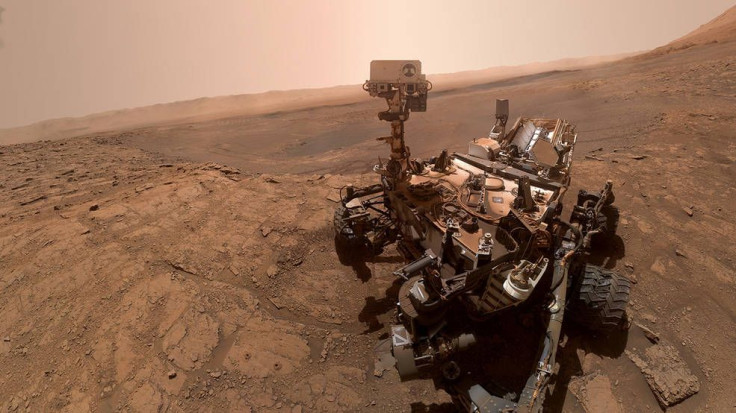NASA Mars Rover Discovers Weird Oxygen Behavior In Red Planet: 'Mind-Boggling'

The Curiosity rover’s latest discovery on Mars has baffled NASA’s scientists. As indicated in the rover’s experiments, oxygen behaves strangely on the Red Planet.
Curiosity reached Mars’ Gale Crater in 2012 and since then, the rover has been sampling air in the region using its Sample Analysis at Mars (SAM), which is a portable laboratory inside its body.
Aside from detecting high levels of methane, SAM revealed that Mars’ atmosphere is composed of 95 percent carbon dioxide, 2.6 percent molecular nitrogen, 1.9 percent argon, 0.16 percent oxygen and 0.06 percent carbon monoxide.
During Curiosity’s stay at the Gale Crater, it was able to check on the area’s atmospheric conditions and composition as the seasons on Mars change. It discovered that during these seasonal changes, air pressure also changes.
During these times, Curiosity detected noticeable drops and spikes in the levels of carbon monoxide, carbon dioxide, nitrogen and argon. Oxygen, on the other hand, doesn’t go through this trend. Instead, oxygen levels increase by 30% during spring and summer times before returning to normal in the fall.
Due to the unusual behavior of oxygen, NASA’s scientists believe that something on Mars could be creating it and also taking it away.
"We're struggling to explain this," Melissa Trainer a planetary scientist at NASA's Goddard Space Flight Center said in a statement.
"The fact that the oxygen behavior isn't perfectly repeatable every season makes us think that it's not an issue that has to do with atmospheric dynamics,” she added. “It has to be some chemical source and sink (of elements into the soil) that we can't yet account for."
Scientists believe that the unusually high levels of methane on Mars might be affecting the behavior of oxygen. However, they are still unsure about the exact source of methane on the Red Planet, scientists can’t confirm how or if it actually interacts with the oxygen on Mars.
"We're beginning to see this tantalizing correlation between methane and oxygen for a good part of the Mars year," Sushil Atreya, a researcher who worked on the study regarding Curiosity discover, said in a statement. "I think there's something to it. I just don't have the answers yet. Nobody does."
The scientists’ findings regarding Curiosity’s atmospheric experiments on Mars were detailed in a new study published in the Journal of Geophysical Research: Planets.
© Copyright IBTimes 2025. All rights reserved.





















